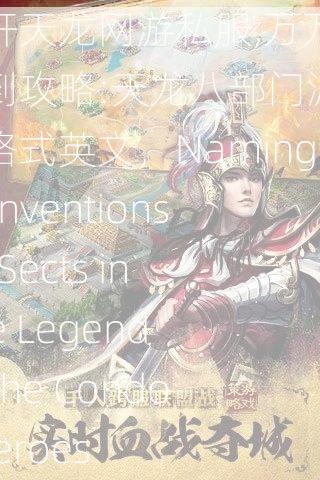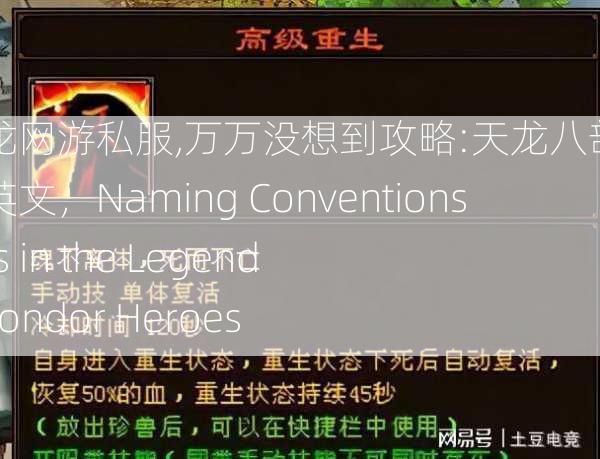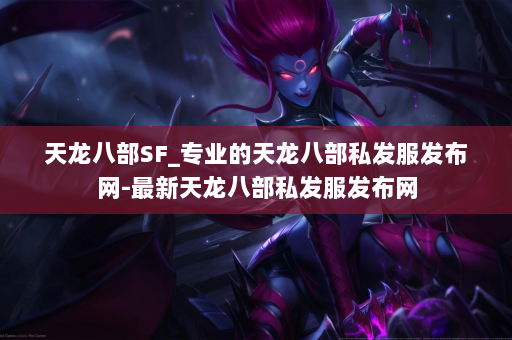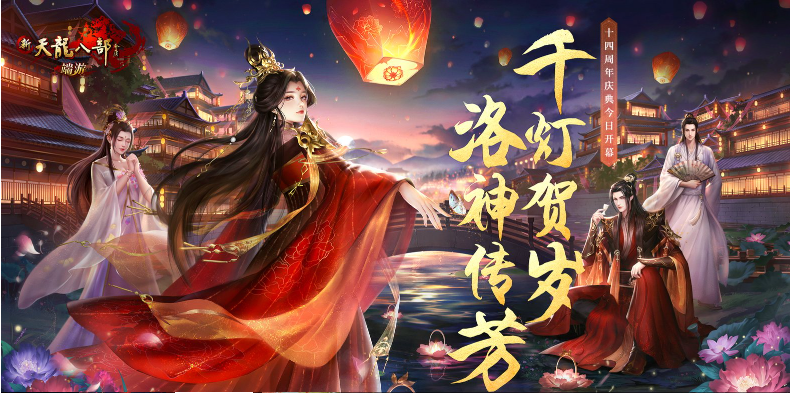新开天龙网游私服,万万没想到攻略:天龙八部门派名字格式英文,Naming Conventions of Sects in the Legend of the Condor Heroes
- 天龙八部文章
- 2025-04-08 05:19:46
- 15
Naming Conventions of Sects in the Legend of the Condor Heroes
In the world of the popular Chinese martial arts novel, "Legend of the Condor Heroes," sects are an integral part of the story. Each sect has its own unique style of martial arts, values, and even naming conventions. In this article, we will delve into the naming conventions of some of the most well-known sects in the novel.

The Shaolin Sect
The Shaolin Sect is one of the most prominent sects in the novel. As the oldest and most famous martial arts sect in China, their name is derived from its location in the Shaoshi Mountain range. The name “Shaolin” literally means “small forest,” which accurately describes the temple’s surroundings. The term “Shaolin” is also used to describe the martial arts style practiced by the sect, known for its emphasis on physical and mental cultivation.
The Wudang Sect
The Wudang Sect is another major sect in the novel. Like Shaolin, its name is derived from its location - Mount Wudang in Hubei Province. The term “Wudang” means “martial arts of Wu Mountain.” Their martial arts style is known for being more supple and internal compared to other sects.

The Beggar’s Sect
The Beggar’s Sect is a somewhat unconventional sect that is composed of wandering beggars. Their naming conventions reflect their unconventional nature. Rather than having a specific name for their sect or martial arts style, members of the sect are given a title based on their physical or personality traits. For example, the leader of the sect, Hong Qigong, is known as “Northern Beggar” due to his origins in Northern China.
The Ancient Tomb Sect
The Ancient Tomb Sect is a secretive sect that is known for their mysterious and dangerous practices. Their naming conventions reflect their dark nature. Members of the sect are named after animals, such as “Black Spider,” “Blood Bat,” and “Golden Roc.” These names give an indication of the member's strength and skills in combat.
The Quanzhen Sect
The Quanzhen Sect is a Taoist sect that emphasizes the balance between internal and external cultivation. The name “Quanzhen” means “complete truth” and reflects the Sect's philosophy. Members are given names that reflect their position within the Sect, such as "Master" or "Disciple," along with a number to designate their seniority.
The Five Mountain Sword Sects
The Five Mountain Sword Sects are a group of sects that share the same philosophy and practice swordsmanship. Each of the Five Mountains (Hua, Song, Heng, Chu, and Yue) has its own Sword Sect, each with a unique name based on their location. Members of the Sword Sects are named after Chinese legends or heroes, such as “Water Dragon” or “Flying Phoenix.”
In conclusion, the naming conventions of sects in "Legend of the Condor Heroes" are important elements that reflect the sect's philosophy, location, and values. From the Shaolin Sect's name derived from its location to the Beggar's Sect's unconventional naming conventions, each sect has a unique name that sets them apart. Understanding these naming conventions adds depth and richness to the story and the characters within it.
本文由酷尚网于2025-04-08发表在酷尚网,如有疑问,请联系我们。
本文链接:http://zcx.ku3721.com/post/5795.html

















